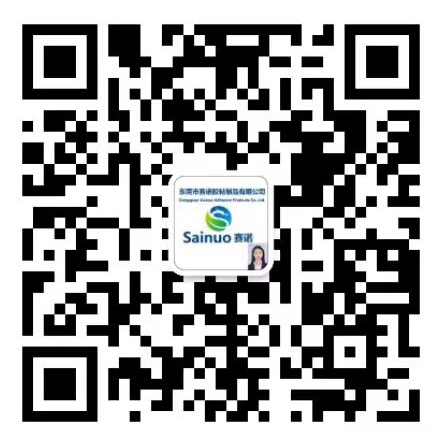Sustainable Packaging Solutions: Eco-Friendly Adhesive Paper Rolls
The Rise of Eco-Friendly Adhesive Solutions
Shifting from Plastic to Fiber-Based Packaging
Traditional plastics used in adhesives and packaging are causing real problems for our environment these days. Most plastic adhesives end up in landfills where they sit for decades without breaking down at all. That's why many companies are turning their attention to fiber based packaging instead. These alternatives actually break down naturally over time and create much less carbon pollution throughout their entire lifecycle from manufacturing to final disposal. We're seeing this trend accelerate as people start caring more about what happens to products after purchase. Market research shows the eco friendly packaging sector growing rapidly right now, with businesses adapting fast to meet customer demands for greener options across various industries.
Regulatory Drivers: 2025 National Packaging Targets
The government has stepped up its game when it comes to pushing for greener packaging options, especially with targets set for 2025 under national packaging guidelines. Manufacturers now find themselves scrambling to switch out traditional adhesives for something more planet friendly just to keep up with all these new rules around sustainability. Many businesses across the board are actually getting serious about going green lately, adjusting how they operate so they fit within these stricter regulations. Take Stylus Tapes for example they've made significant moves toward sustainable materials recently because besides needing to follow the law, there's definitely growing consumer pressure from folks who care about environmental impact. Looking at how quickly things are changing in this space shows just how much influence legislation can have on where the packaging industry is headed next.
Key Materials in Sustainable Adhesive Paper Rolls
Compostable Films & Plant-Based Adhesives
Compostable films represent an important breakthrough for sustainable adhesive paper products on the market today. When placed in proper compost settings, these materials break down naturally without leaving behind plastic waste that lingers in landfills. The plant based adhesives used in many of these products offer several benefits when compared to regular synthetic glues. For starters, they cause less harm to ecosystems and rely on resources that can be replenished through farming practices. Field tests conducted last year demonstrated that most compostable items will fully decompose within months if kept in industrial compost facilities where temperatures stay consistently warm. As companies move toward greener manufacturing processes, this transition helps meet both regulatory requirements and what consumers increasingly expect from brands committed to environmental responsibility.
Recyclable Kraft Paper and FSC-Certified Options
Kraft paper that can be recycled helps cut down on waste across packaging sectors. The fiber content makes recycling straightforward, which means the material gets multiple uses before ending up in landfills. When looking at certified FSC materials, they come from forests managed responsibly according to strict environmental guidelines. Looking at actual numbers, recycled paper has made a real dent in overall waste levels while saving valuable resources too. For companies trying to go green, switching to these kinds of papers matters a lot. Many manufacturers are now finding ways to integrate recyclable kraft into their adhesive paper rolls, which boosts the sustainability factor without compromising product quality or performance requirements.
Post-Consumer Recycled (PCR) Materials
PCR materials come from items people have already used before getting thrown away, then processed again for making new stuff. What makes these materials so important is that they cut down on how much we need to pull fresh resources out of the ground, which saves natural materials and helps protect the environment. When companies start using PCR in things like adhesives, they create products that meet what customers want today plus follow the rules set by environmental regulations. Real world tests show these recycled materials work just as well as regular ones without compromising product quality, yet they leave a much smaller mark on nature. For factories looking to go green without sacrificing performance, incorporating PCR into production lines represents a smart move forward.
Advantages Over Conventional Packaging
Reducing Landfill Waste with Biodegradable Solutions
Biodegradable adhesives are becoming increasingly important for cutting down on landfill waste, especially when compared to traditional packaging options. What makes these materials stand out is their ability to decompose naturally without leaving harmful residues behind. When placed in proper conditions, biodegradable packaging breaks down within months rather than centuries, which means less trash accumulating in our landfills. Landfills already struggle with massive amounts of regular packaging waste, sometimes making up over half of what goes in there. Switching to biodegradable alternatives could cut this problem down by around 40 percent according to recent EPA reports. Many businesses are starting to make the switch not just because it helps protect the environment, but because customers now expect eco-friendly packaging choices when shopping for everyday items.
Cost Efficiency Through Linerless and Water-Activated Technologies
Switching to linerless labels and water activated adhesives saves money on packaging budgets. Without those pesky release liners, companies cut down on both waste and what they spend on materials. The absence of liners also means longer rolls between changes at production lines, which cuts downtime and lowers shipping costs too. One big box store saw real results after making the switch last year. Their labeling costs dropped around 15%, while production speed went up about 20% according to a report in the Journal of Packaging Technology. Water activated glues are another winner for the bottom line. They stick just as well but without all the plastic backing, plus they're better for the environment. Many manufacturers find these alternatives make sense financially while still meeting quality standards, especially when looking at long term sustainability goals.
Industry Innovations and Future Trends
Digital Printing for Sticker Paper Applications
The sticker paper market has changed quite a bit since digital printing came along, becoming both greener and more productive. Digital printing allows businesses to get their orders done much faster while still letting customers personalize almost anything they want on those stickers. Traditional methods used to create tons of wasted material, but now there's far less leftover stuff lying around. People love getting exactly what they need without all that extra junk. Looking ahead, many experts believe digital printing will push things even further toward eco-friendly packaging options. Some estimates suggest improvements are coming down the road that should cut back on resources needed and make recycling easier throughout the whole sticker paper business.
RFID Integration and Smart Packaging Advancements
RFID tech has become really important for tracking things inside packaging, which represents a big step up from traditional inventory methods. When companies put RFID chips into their packaging materials and labels, they get much better control over what's in stock. This means businesses can track products more accurately, save resources, and actually do something meaningful for sustainability. The smart packaging concept takes advantage of all this tech progress, helping cut down on wasted materials across the board. Take Beontag as an example – they've been putting RFID tags directly into their environmentally friendly packaging solutions for years now. Same goes for Avery Dennison who started incorporating this technology back when most people hadn't even heard of RFID yet. These early adopters aren't just making their operations run smoother though; they're following international green guidelines too. As more manufacturers see real results from these implementations, we're likely going to see continued growth in sustainable packaging practices throughout the sector.
Choosing the Right Sustainable Adhesive Solution
Matching Materials to Use Cases: Printable vs. Clear Sticker Paper
Choosing the right kind of sticker paper matters a lot for companies looking at both how well things work and being green. Printable sticker sheets are pretty flexible since they work with regular office printers, whether inkjet or laser, which makes them great for creating custom labels or doing small project runs. On the flip side, clear sticker material gives off that clean, professional vibe. Good for when text needs to stand out because the transparent nature lets whatever's behind show through. When picking between options, most businesses think about how long they'll last, what they look like, and their effect on the environment. Take indoor signs for instance printable stickers tend to win there because colors pop better. But if something needs to hold up outside or get wet, clear stickers usually take the prize for staying intact longer. Getting the stickiness right for each job means getting good results without sacrificing looks or going against eco goals.
Certifications to Look For: Compostability and Recyclability Standards
When it comes to sustainable packaging, certifications act as green flags showing both shoppers and businesses that products actually meet environmental standards. Two main areas get certified: compostability and recyclability. Take the BPI compostable label for example. That means whatever has it will turn back into soil safely over time. Then there's the recyclable mark which basically tells us the material works well in recycling systems, helping keep resources moving in circles instead of ending up in landfills. These labels matter more than ever since both companies and customers want to walk the talk on going green. Organizations such as TÜV Austria and FSC handle most of these certifications, giving manufacturers something solid to back up their claims about sustainability. Brands that understand what these certifications really mean tend to stand out in markets where eco-consciousness is becoming table stakes rather than optional extras.

 EN
EN
 AR
AR
 BG
BG
 HR
HR
 CS
CS
 DA
DA
 NL
NL
 FI
FI
 FR
FR
 DE
DE
 EL
EL
 HI
HI
 IT
IT
 JA
JA
 KO
KO
 NO
NO
 PL
PL
 PT
PT
 RO
RO
 RU
RU
 ES
ES
 SV
SV
 CA
CA
 ID
ID
 SR
SR
 SK
SK
 SL
SL
 SQ
SQ
 GL
GL
 HU
HU
 TH
TH
 TR
TR
 FA
FA
 MS
MS
 GA
GA
 MK
MK
 UR
UR
 BN
BN
 LA
LA






